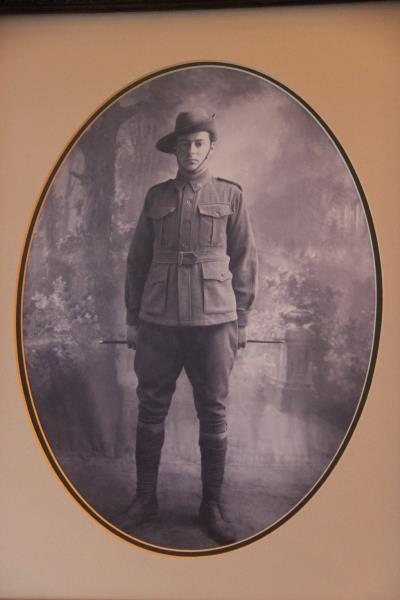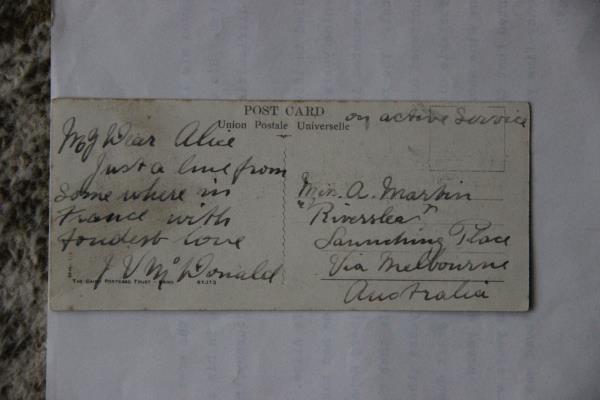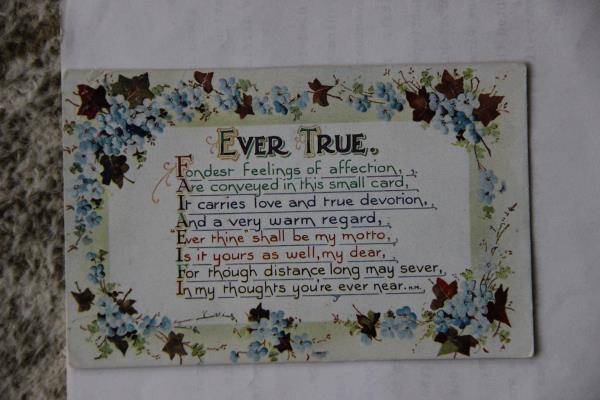
By KATH GANNAWAY
JOHN Valentine McDonald was 25 when he joined up on 15 June 1915.
He went into the 24th Battalion AIF, number 1929 and photos show he was a strapping six-foot, two-inches tall.
A member of the Launching Place Rifle Club, it’s a fair bet, also, that he was also a bit handy with a rifle.
As things panned out, he was resilient, both during the war and after… even lucky!
Listed at one point as killed in action, he actually survived Gallipoli and other battle fronts to return to the Yarra Valley to work, raise a family and get on with life.
His daughters, Val Christie from Healesville and Judith Thomas from Seville, will reflect even a little more on that part of their dad’s life this year.
Their memories of him are post war – a returned soldier who settled on 401 acres in Badger Creek, built the family home and was the first caretaker at Coranderrk Weir, now Badger Weir.
But they have photos, post-cards and stories shared as they and their siblings, Jack, Kathleen and Frank were growing up that tell his war-time story.
Val said his WWI experiences, written up by his niece Kelly McDonald more than a decade ago, is a reminder of the sacrifice made by so many.
“He was injured three times and every Anzac Day I read his story and can’t help but cry,” Val said.
“It reminds me of what he went through and even after all this time, you still miss him.”
The photos show a young, single man from Launching Place, well known and well liked.
He was the son of one of the district’s pioneer families, Valentine McDonald and his wife Annie Catherine.
His sweetheart and later wife Alice Martin was the daughter of another pioneering family John and Alice Susan Martin from Yarra Junction.
Post-cards between the two, often just one or two lines, declare their love, but there is nothing of the brutality, pain and horror of John’s war experience.
Kelly saw the dichotomy of his experiences which she said “were ordinary for the time and yet extraordinary for any man to have to endure”.
They include the story of the Arab hairdresser Acki-Bjelke who was put before the firing squad in Egypt and of ‘Darky Sneezby’ who was everyone’s envy after receiving a ‘blighty’ (minor wound) which sent him from Lone Pine back to recover in Britain.
His death from blood poisoning from the ‘blighty’ was a shattering experience and another example of the horrors of war.
He survived the role of a grenadier – a bomber who hurled grenades at the enemy – at Poziers, and the day-to-day exposure to death in the trenches and on the front line.
But he didn’t escape unscathed.
His first injury was at Gallipoli on 21 December 1915 and he was wounded again at Poziers on 17 October 1916.
A shot to the head at the Second Battle of Bullecourt on 16 June 1917 put an end to his active service.
It was an horrific wound, shot behind the right ear with the bullet exiting through his mouth.
The stretcher bearer who found him listed him as ‘killed in action’.
It was early dawn and it was only later in the day that he was seen to move and was taken for medical attention.
Returning to Launching Place, John joined the 24th Battalion Association and looked forward to Anzac Day each year when he met up with friends, including from surrounding towns including Marysville, Narbethong, Alexandra and Healesville.
John was 69 when he died in 1959.
Judith and Val said he was one of the lucky ones.
He returned to marry his sweetheart and make a good life, not entirely without the legacy of war, but loving, productive and unlike countless thousands of his generation, long.












